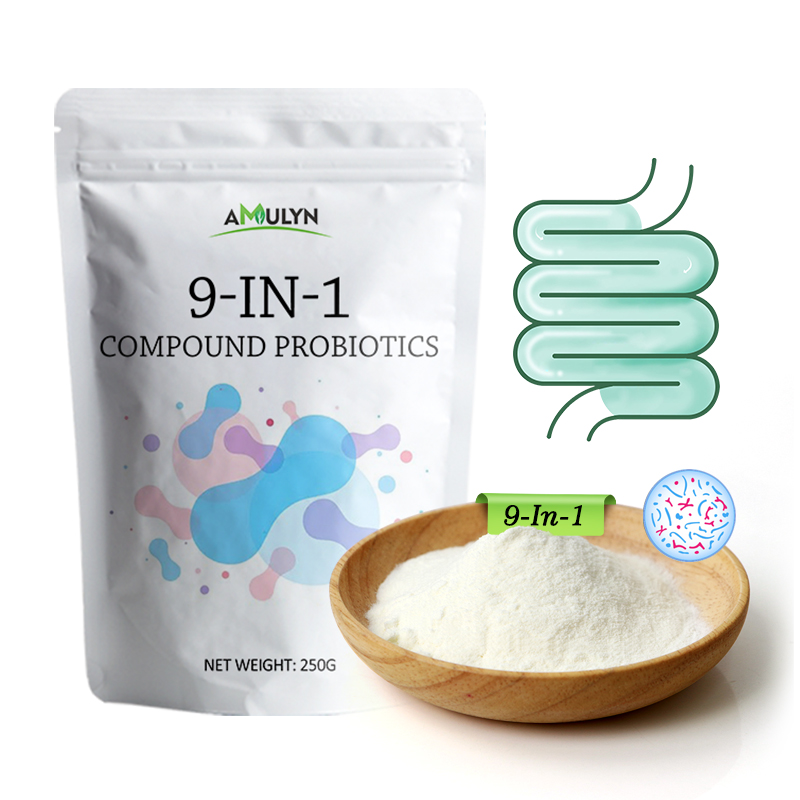Probiotics Strains and Research: Unveiling Your "Gut Guardians"
1. Probiotics Strains and Research: Unveiling Your "Gut Guardians"
Probiotics are a group of live microorganisms that are beneficial to the host's health. Their efficacy highly depends on strain specificity. Scientific research has identified thousands of strains, and each strain has its unique functions. The common star strains and their functions are as follows:
Lactobacillus rhamnosus: It can reduce antibiotic - associated diarrhea and enhance the immune function of children.
Lactobacillus plantarum: It has multiple probiotic functions. It can regulate the intestinal microecological balance, enhance the intestinal barrier function, promote the absorption of nutrients, and also has antibacterial, antioxidant, and cholesterol - lowering effects.
Bifidobacterium lactis: It helps maintain intestinal health, promotes food digestion and nutrient absorption, and helps regulate the immune system function. It can play a role in preventing intestinal problems such as diarrhea and constipation.
2. Daily Probiotic Intake: Necessary or Redundant?
Recommended for daily supplementation:
- People with imbalanced flora caused by long - term use of antibiotics.
- Patients with chronic irritable bowel syndrome (IBS) or inflammatory bowel disease (IBD).
- People with low immunity (such as chemotherapy patients).
Not necessary for daily supplementation:
- Healthy people can maintain the balance of flora through diet (such as pickled vegetables, kombucha).
- After short - term diarrhea recovery, the intestinal flora can usually repair itself.
3. Scientific Timing of Intake: Fasting, with Meals, or Before Bed?
Comparison of the advantages and disadvantages of the three time periods:
Time
|
Advantages
|
Disadvantages
|
Morning fasting
|
Gastric acid concentration is lowest, survival rate is high
|
May irritate gastric mucosa and cause discomfort
|
Take with meals
|
Food buffers gastric acid, survival rate increased by 50%+
|
High-fat meals may delay the arrival of probiotics in the intestines
|
1 hour before bedtime
|
Gastric acid secretion is reduced, which is conducive to colonization
|
Some people may have sleep affected by digestive activities
|
4. What problems should we avoid when using probiotics?
- Avoid competition between probiotics and other nutrients:
For example, calcium and iron supplements compete with probiotics for absorption channels. Taking them separately is more efficient.
- Minimize the simultaneous use of probiotics and antibiotics:
There should be an interval of 2 - 3 hours, and it is recommended to take probiotics first.
- When using probiotic powder, do not consume it with high - temperature beverages:
Coffee and hot tea can kill live bacteria. Keep an interval of more than 30 minutes.
- Take probiotics and acid - suppressing drugs (such as omeprazole) at intervals:
Too little stomach acid is not conducive to the activation of some strains.
- Avoid using probiotics and alcohol simultaneously:
Alcohol can damage the intestinal barrier function and offset the effects of probiotics.
5. Advanced Tips: How to Double the Effect of Probiotics?
Dietary Coordination:
High - fiber diets (such as oats, beans) provide "food" (prebiotics) for probiotics.
Avoid high - sugar diets, as sugar promotes the growth of harmful bacteria.
Storage Methods:
Unopened probiotics need to be refrigerated (2 - 8°C) and should be used up within 1 month after opening.
Heat - resistant strains (such as spore - type probiotics) can be stored at room temperature.
Exercise Assistance:
Moderate exercise can promote intestinal peristalsis and help probiotics distribute evenly.
Dynamic Adjustment:
Optimize the dosage and time according to physical feedback (such as bowel movement regularity, degree of flatulence).
Long - Term Monitoring:
Consult a nutritionist or doctor every 6 months to assess whether continued supplementation is necessary.
The gut is the "barometer" of health. Use probiotics scientifically and make it your lifelong health ally!
 Koicha Ceremonial Grade Matcha Powder
Koicha Ceremonial Grade Matcha Powder Organic Ceremonial Grade Matcha Powder
Organic Ceremonial Grade Matcha Powder Premium Beverage Grade Matcha Powder
Premium Beverage Grade Matcha Powder Everyday Culinary Grade Matcha Powder
Everyday Culinary Grade Matcha Powder Organic Instant Pure Matcha
Organic Instant Pure Matcha Soy Lecithin Powder
Soy Lecithin Powder Sunflower Lecithin Powder
Sunflower Lecithin Powder Soy Lecithin Granules
Soy Lecithin Granules Phosphatidylcholine
Phosphatidylcholine  Phosphatidylserine
Phosphatidylserine Soy Lecithin Liquid
Soy Lecithin Liquid Reishi Mushroom Powder
Reishi Mushroom Powder Lion's Mane Mushroom Powder
Lion's Mane Mushroom Powder Cordyceps Sinensis Powder
Cordyceps Sinensis Powder Chaga Mushroom Powder
Chaga Mushroom Powder Shiitake Mushroom Powder
Shiitake Mushroom Powder Cordyceps Militaris Powder
Cordyceps Militaris Powder


























































